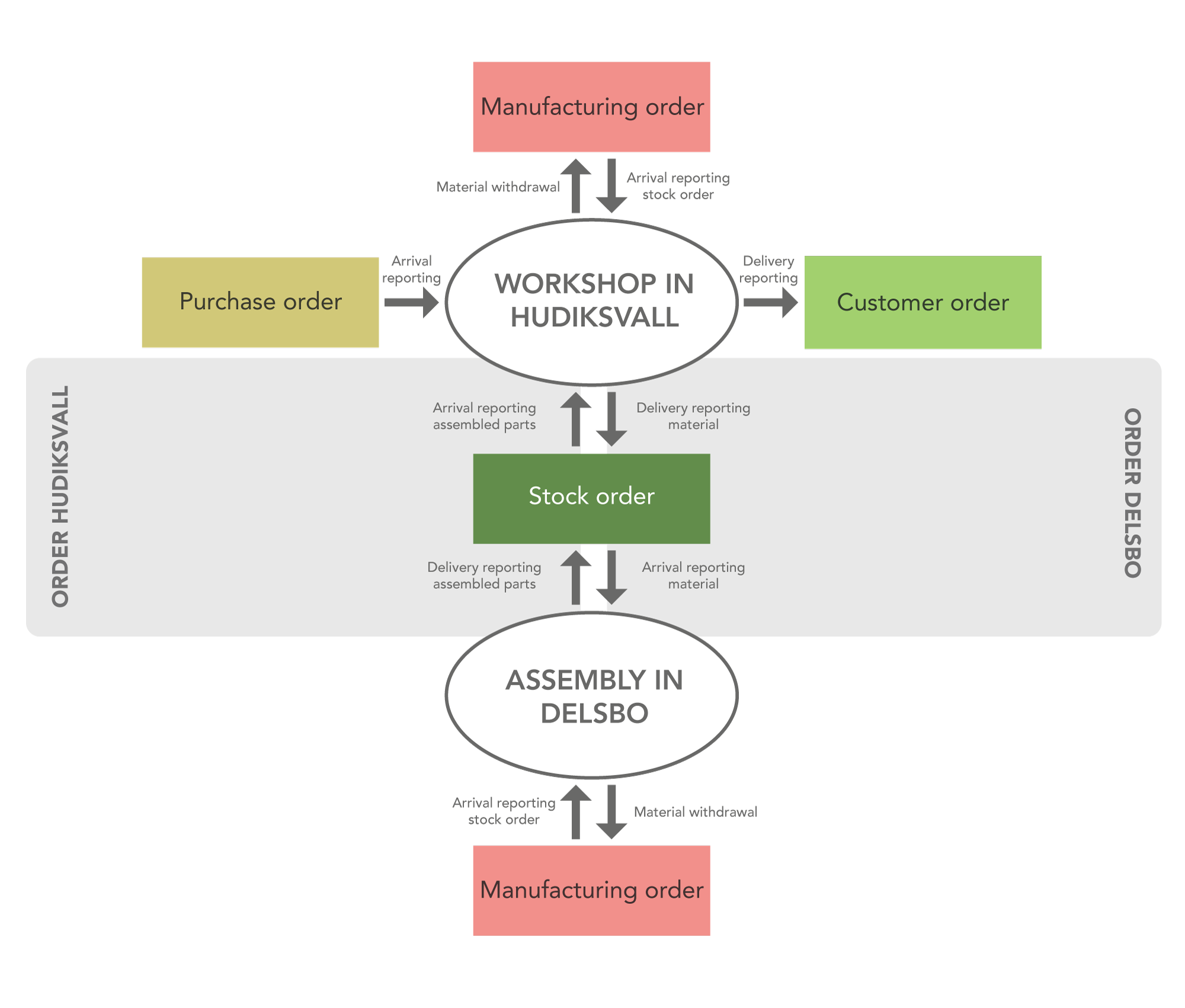Warehouse
Warehouse is an option in Monitor ERP. A warehouse is a physical storage facility which is administrated as a separate unit. A warehouse can be units in separate buildings within the same premises, for example, a raw material deposit, spare parts inventory, and finished stock. It may also be separate units located in different cities belonging to the same company, such as regional and local distribution stock/warehouses. If other operations also take place at the warehouse location (manufacturing, etc.), then it is an operational unit. All warehouses belong to the same legal entity (the same company). Basic data![]() With "basic data" we refer to the static records in a database, for example parts, customers, users, work centers, etc. is the same for all warehouses within a company, but it may belong to a specific warehouse. Certain basic data may be dependent on warehouse, for example, planning settings for parts. Orders belong to a specific warehouse, while lists may contain data from several different warehouses.
With "basic data" we refer to the static records in a database, for example parts, customers, users, work centers, etc. is the same for all warehouses within a company, but it may belong to a specific warehouse. Certain basic data may be dependent on warehouse, for example, planning settings for parts. Orders belong to a specific warehouse, while lists may contain data from several different warehouses.
Warehouse is often abbreviated as WH in the MONITOR system, for example, in column headings in tables. Even if you don’t have the Warehouse option installed, there is technically still one warehouse in the company where all data is saved, however, this will then not be shown in the user interface.
This example shows an operational unit at one location, with a warehouse at another location. The operational unit carries out purchasing, manufacturing, and sales. The warehouse only manages sales. The operational unit can deliver units to the warehouse using stock orders. This is an order type in the system which allows this kind of transfer. The warehouse only receives arrivals from the operational unit.
This example shows two equal operational units, which both handle purchasing, manufacturing, and sales. Both units can deliver and receive goods to and from each other via stock orders. In this case, both units can create material withdrawals for manufacturing orders from either unit, but will only report to the unit to which the manufacturing order belongs.






